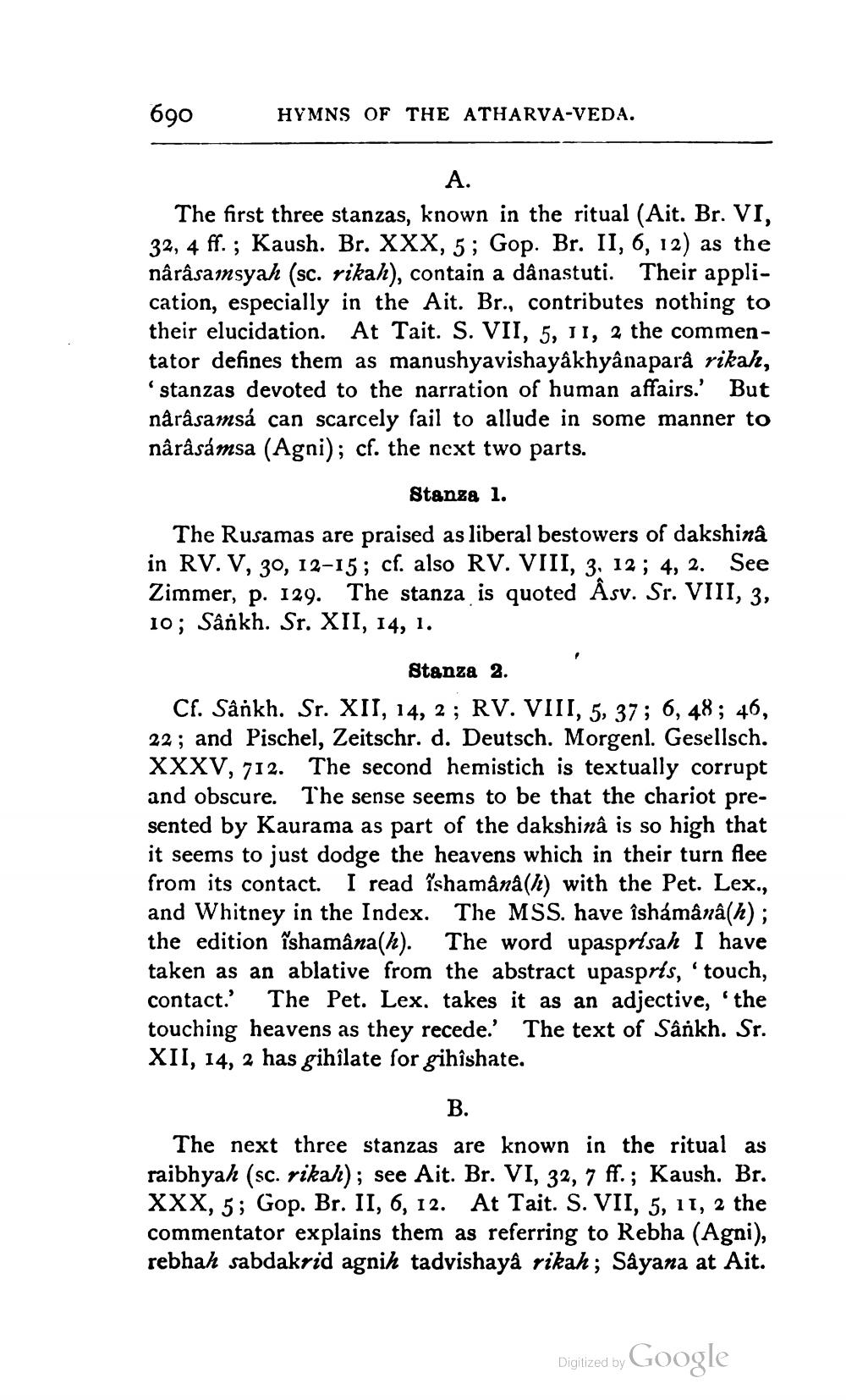________________
090
HYMNS OF THE ATHARVA-VEDA.
A.
The first three stanzas, known in the ritual (Ait. Br. VI, 32, 4 ff. ; Kaush. Br. XXX, 5; Gop. Br. II, 6, 12) as the nârâsamsyah (sc. rikah), contain a dânastuti. Their application, especially in the Ait. Br., contributes nothing to their elucidation. At Tait. S. VII, 5, II, 2 the commentator defines them as manushyavishayâkhyânaparâ rikah, 'stanzas devoted to the narration of human affairs.' But nârâsamsá can scarcely fail to allude in some manner to nârâsámsa (Agni); cf. the next two parts.
Stanza 1. The Rusamas are praised as liberal bestowers of dakshina in RV. V, 30, 12-15; cf. also RV. VIII, 3, 12 ; 4, 2. See Zimmer, p. 129. The stanza is quoted Åsv. Sr. VIII, 3, 10; Sânkh. Sr. XII, 14, 1.
Stanza 2. Cf. Sânkh. Sr. XII, 14, 2 ; RV. VIII, 5, 37; 6, 48; 46, 22; and Pischel, Zeitschr. d. Deutsch. Morgenl. Gesellsch. XXXV, 712. The second hemistich is textually corrupt and obscure. The sense seems to be that the chariot presented by Kaurama as part of the dakshina is so high that it seems to just dodge the heavens which in their turn flee from its contact. I read Yshamânå(Iz) with the Pet. Lex., and Whitney in the Index. The MSS. have îshámânâ(h); the edition (shamâna(). The word upasprisah I have taken as an ablative from the abstract upaspris, 'touch, contact. The Pet. Lex, takes it as an adjective, 'the touching heavens as they recede.' The text of Sânkh. Sr. XII, 14, 2 has gihîlate for gihîshate.
B. The next three stanzas are known in the ritual as raibhyah (sc. rika)); see Ait. Br. VI, 32, 7 ff.; Kaush. Br. XXX, 5; Gop. Br. II, 6, 12. At Tait. S. VII, 5, 11, 2 the commentator explains them as referring to Rebha (Agni), rebhah sabdakrid agnih tadvishayå rikah ; Sâyana at Ait.
Digized by Google




